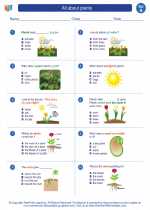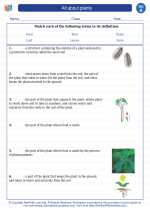Mosses: A First Grade Science Guide
Dear First Graders, today we are going to learn about mosses. Mosses are small, flowerless plants that typically grow in dense green clumps or mats. They are found in moist, shady areas and are often seen growing on rocks, tree bark, and the forest floor. Let's explore some interesting facts about mosses!
What are Mosses?
Mosses are simple plants that do not have true roots, stems, or flowers. They reproduce using spores instead of seeds. They absorb water and nutrients through their leaves and stems. Mosses play an important role in the ecosystem by helping to retain moisture and prevent soil erosion.
Life Cycle of Mosses
The life cycle of mosses begins with spores that are released from the capsule of the mature plant. When conditions are right, the spores germinate and grow into a thread-like structure called a protonema. The protonema then develops into a leafy gametophyte, which produces eggs and sperm. When water is present, the sperm swim to the egg and fertilization occurs, leading to the development of a sporophyte. The sporophyte eventually releases spores, completing the life cycle.
Adaptations of Mosses
Mosses have several adaptations that help them survive in their environment. Their small size and ability to grow in dense mats allow them to retain moisture and compete for space with other plants. They can also go dormant during dry periods and resume growth when conditions become favorable again.
Let's Recap!
Now that we've learned about mosses, let's review some key points:
- Mosses are small, flowerless plants that grow in moist, shady areas.
- They reproduce using spores and play a role in preventing soil erosion.
- Their life cycle involves spore germination, protonema formation, gametophyte development, fertilization, and sporophyte production.
- Mosses have adaptations such as small size, dense growth, and dormancy to survive in their environment.
Great job, first graders! You've learned a lot about mosses today. Keep exploring the natural world around you!
.◂Science Worksheets and Study Guides First Grade. All about plants

 Worksheet/Answer key
Worksheet/Answer key
 Worksheet/Answer key
Worksheet/Answer key
 Worksheet/Answer key
Worksheet/Answer key
 Vocabulary/Answer key
Vocabulary/Answer key
